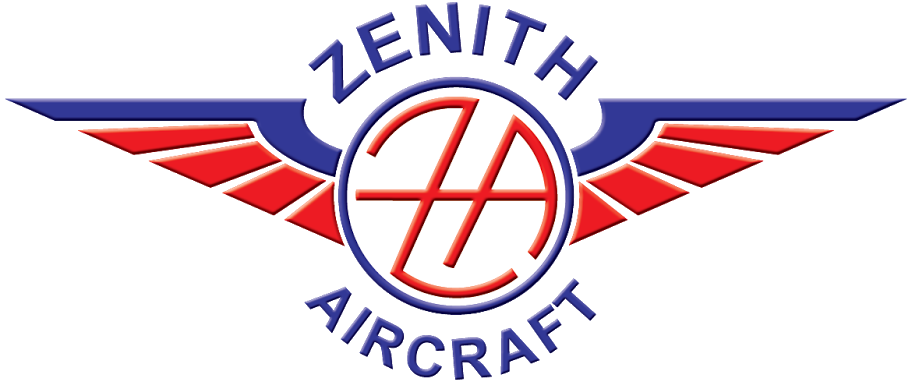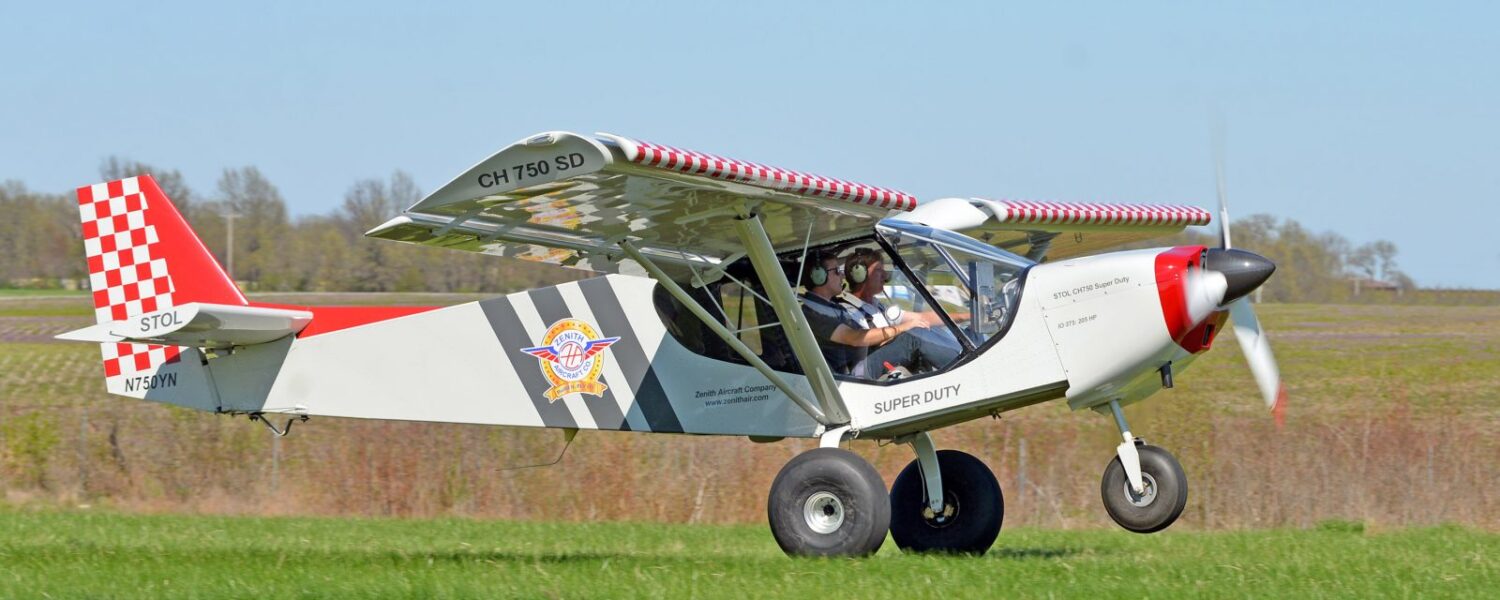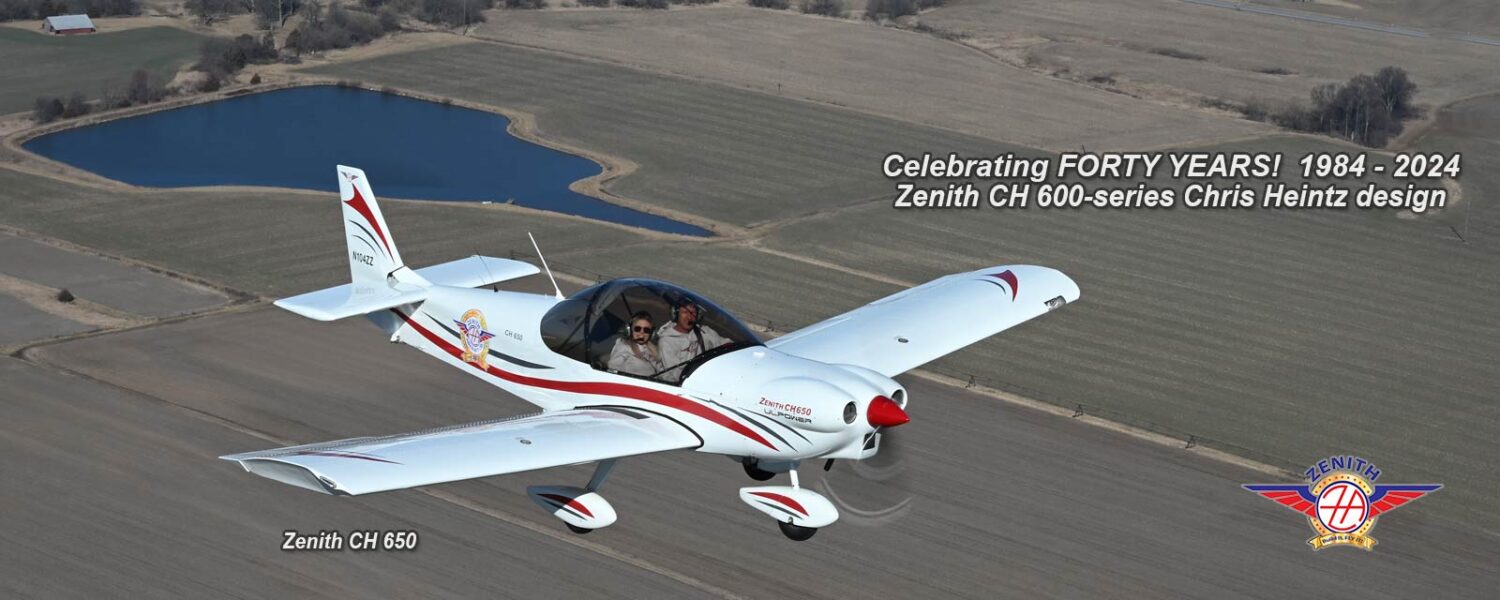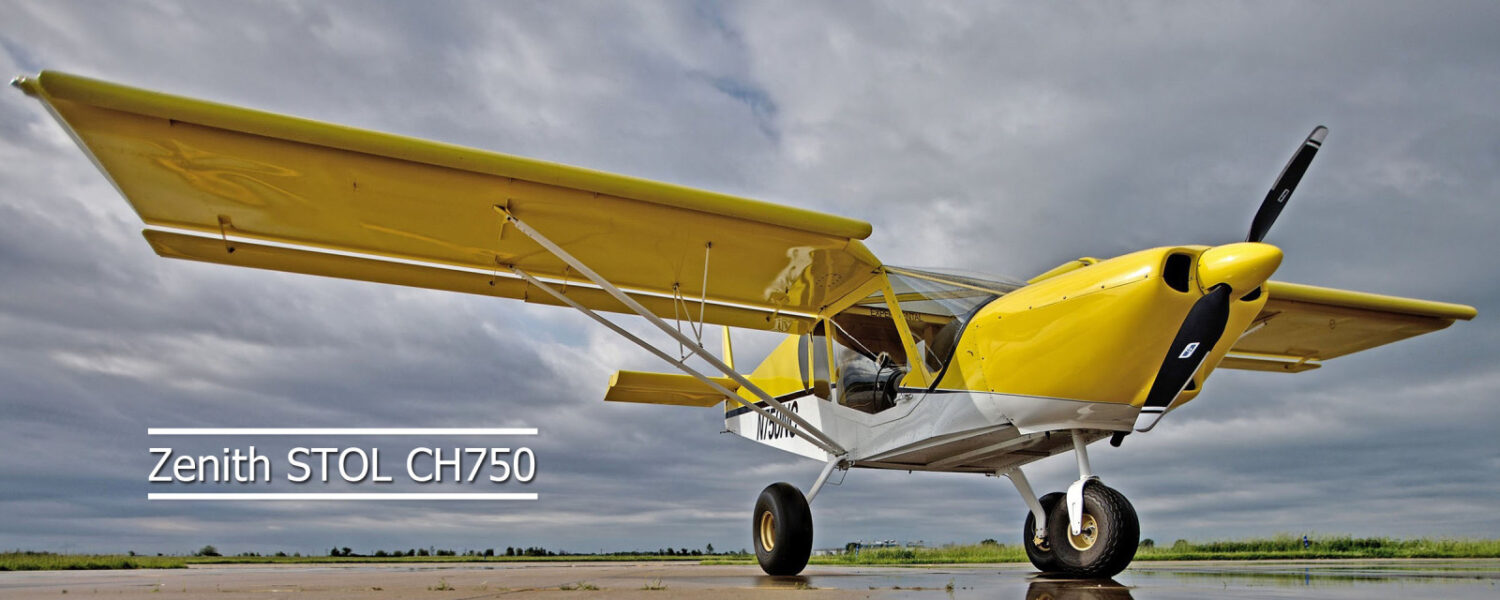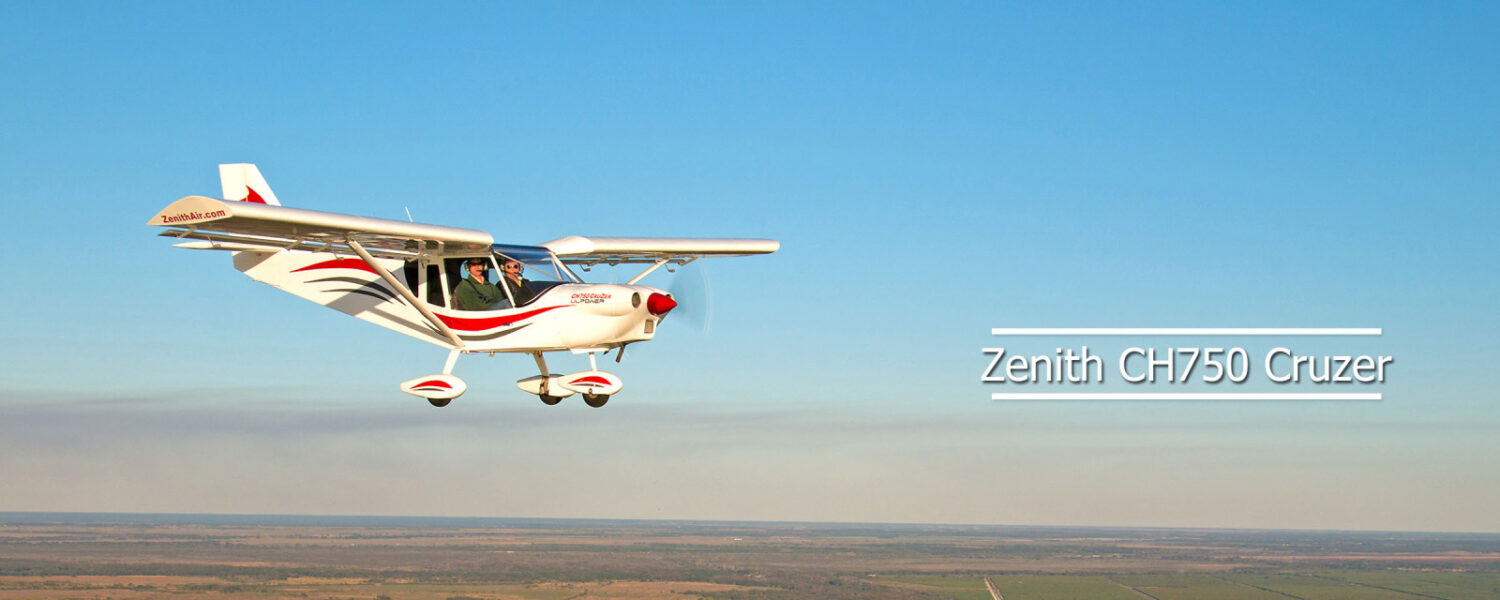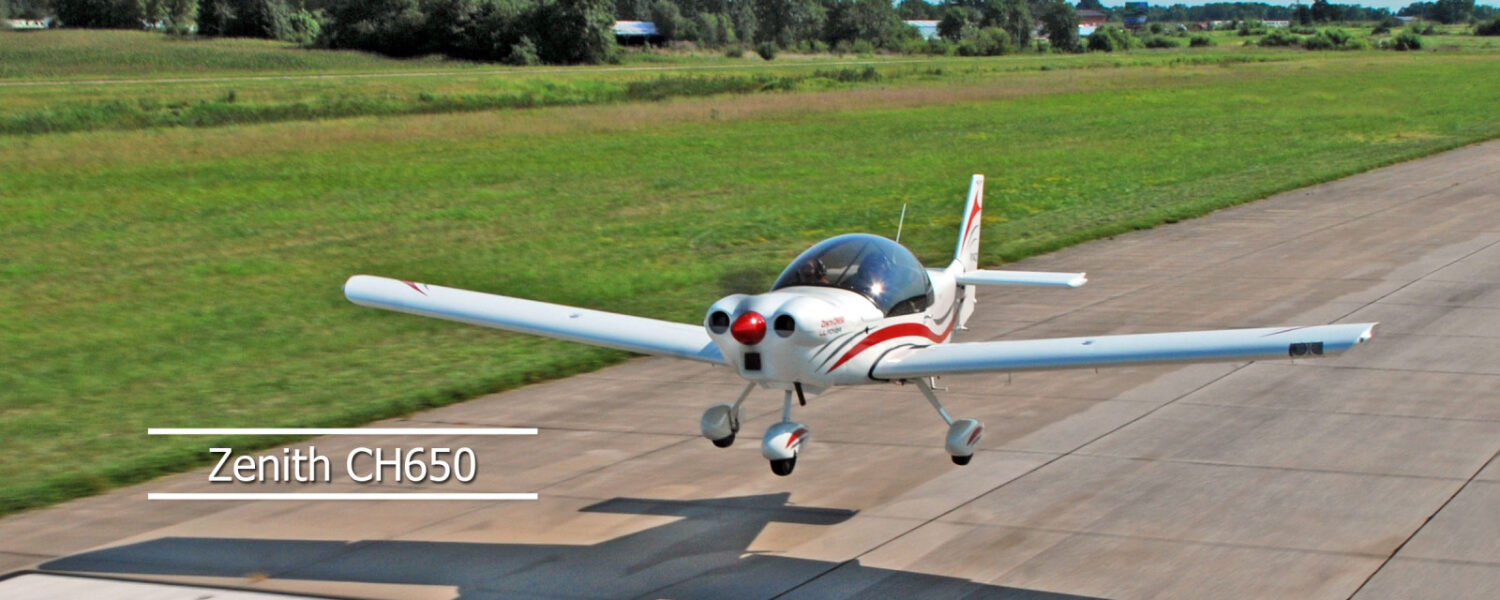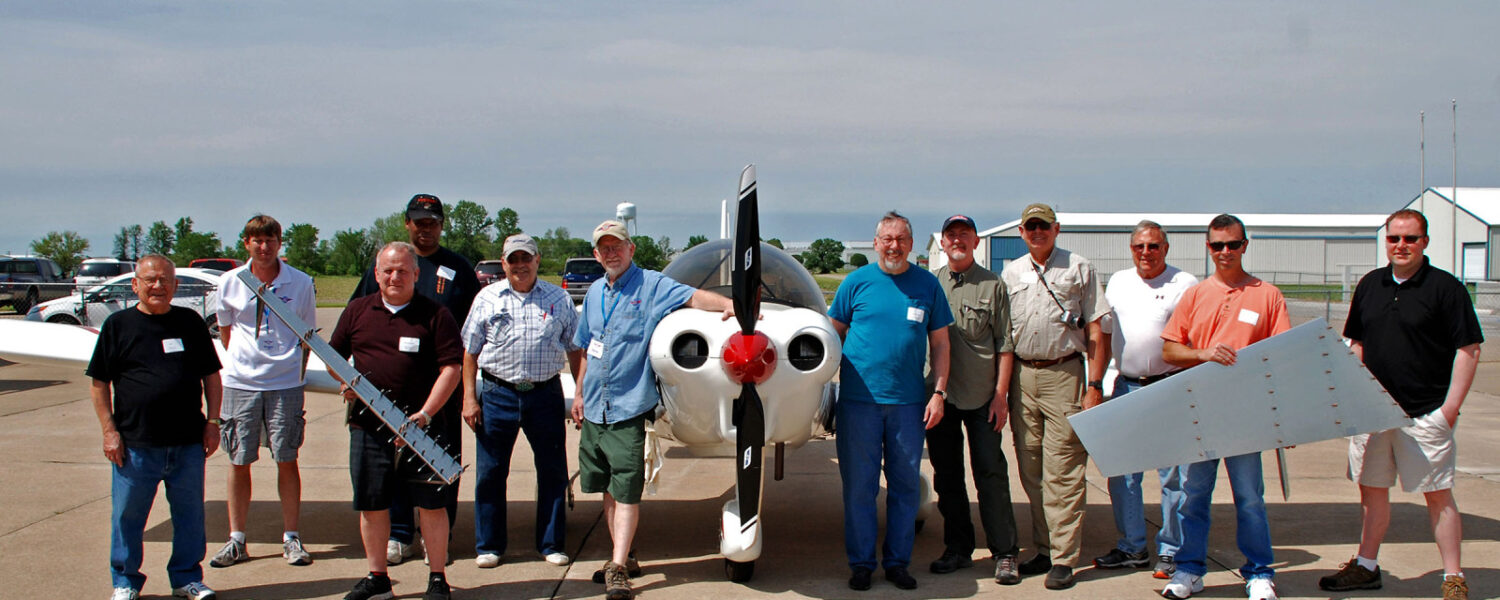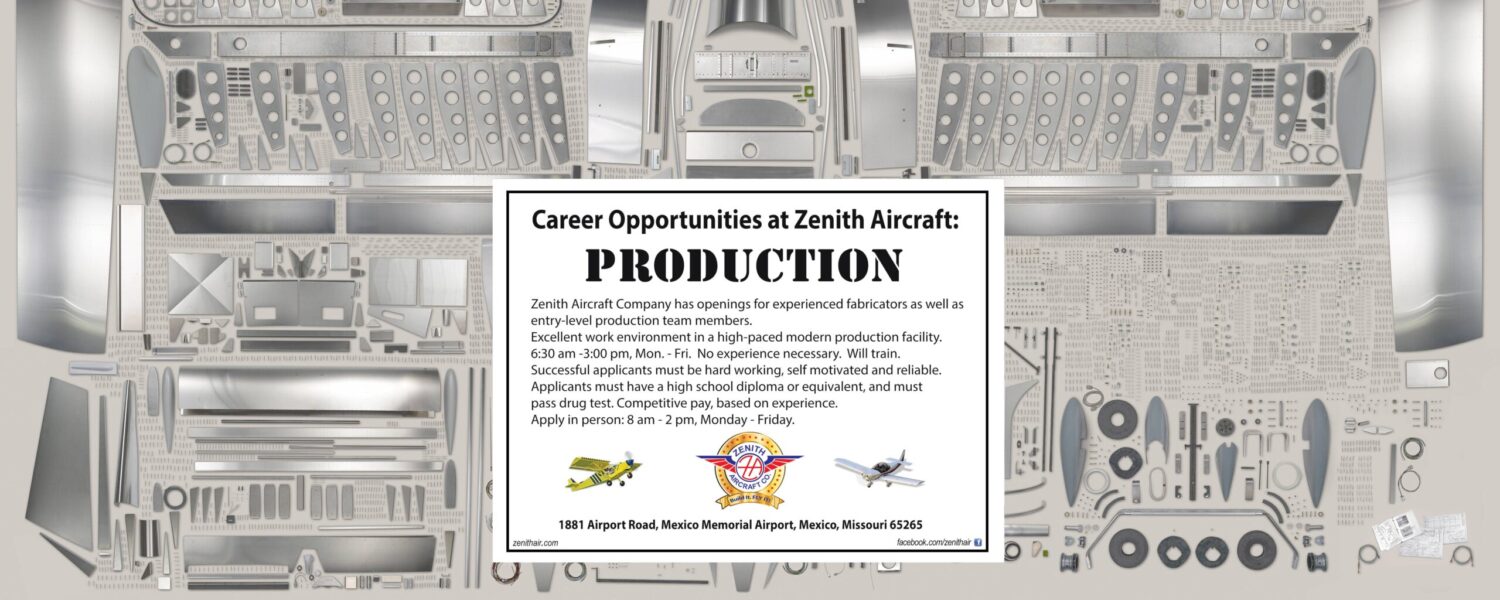Wood, Aluminum, Steel and Composites… and the Properties of each.
By Chris Heintz
Aircraft structures are basically unidirectional. This means that one dimension, the length, is much larger than the others – width or height. For example, the span of the wing and tail spars is much longer than their width and depth; the ribs have a much larger chord length than height and/or width; a whole wing has a span that is larger than its chords or thickness; and the fuselage is much longer than it is wide or high. Even a propeller has a diameter much larger than its blade width and thickness, etc…. For this simple reason, a designer chooses to use unidirectional material when designing for an efficient strength to weight structure.Unidirectional materials are basically composed of thin, relatively flexible, long fibers which are very strong in tension (like a thread, a rope, a stranded steel wire cable, etc.)
An aircraft structure is also very close to a symmetrical structure. That means the up and down loads are almost equal to each other. The tail loads may be down or up depending on the pilot raising or dipping the nose of the aircraft by pulling or pushing the pitch control; the rudder may be deflected to the right as well as to the left (side loads on the fuselage). The gusts hitting the wing may be positive or negative, giving the up or down loads which the occupant experiences by being pushed down in the seat … or hanging in the belt.
Because of these factors, the designer has to use a structural material that can withstand both tension and compression. Unidirectional fibers may be excellent in tension, but due to their small cross section, they have very little inertia (we will explain inertia another time) and cannot take much compression. They will escape the load by bucking away. As in the illustration, you cannot load a string, or wire, or chain in compression.
In order to make thin fibers strong in compression, they are “glued together” with some kind of an “embedding”. In this way we can take advantage of their tension strength and are no longer penalized by their individual compression weakness because, as a whole, they become compression resistant as they help each other to not buckle away. The embedding is usually a lighter, softer “resin” holding the fibers together and enabling them to take the required compression loads. This is a very good structural material.
Wood
Historically, wood has been used as the first unidirectional structural raw material. Nature, in her wisdom, has provided a beautiful unidirectional material by making certain trees grow in certain conditions: They have to be tall and straight and their wood must be strong and light. The cross section of a tree trunk shows the “annual rings” (a ring per year so that we can “count” the tree’s age). The dark bands (late wood) contain many fibers, whereas the light bands (early wood) contain much more “resin”. Thus the wider the dark bands, the stronger and heavier the wood. If the dark bands are very narrow and the light bands quite wide, the wood is light but not very strong. To get the most efficient strength to weight ratio for wood we need a definite numbers of bands per inch (see ANC No. 18,1951). In fact, what we want is a good balance of “early” and “late” wood, or in other words, very special growing conditions, i.e., the geographic altitude where the tree’s growth varies with the latitude and local climatic conditions. Although this is a very interesting subject we will not go further into such details except to mention that it is nature who supplies us with a very efficient material from its plant kingdom. Remember that contrary to the strictly mineral world hopelessly subject to gravity pulling everything down, the plant has a force within itself which makes it grow against gravity, upwards. If we could use those life forces in our machines we could lift off without the help of an engine… Aviation still has a lot to discover….
Another subject we will not deal with this month is the testing of wood. There are a few simple tests (humidity, dynamics, resilience) but it seems that nobody knows them anymore.
Some of our aircraft structures are two-dimensional (length and width are large with respect to thickness). Plywood is often used for such structures. Several thin boards (foils) are glued together so that the fibers of the various layers cross over at different angles (usually 90 degrees today years back you could get them at 30 and 45 degrees as well). Plywood makes excellent “shear webs” if the designer knows how to use plywood efficiently. (We will learn the basis of stress analysis sometime later.)
To close this discussion on wood, let us plainly state the fact that our present day bureaucratic civilization uses so much paper that we are depleting the planet of trees without replanting them correctly. Today good aircraft wood is very hard to come by. Instead of using one good board for our spars, we have to use laminations because large pieces of wood are practically unavailable, and we no longer can trust the wood quality; we have to use many laminations so that the “average” has a reasonable chance to give us the required strength without too much penalty from a weight standpoint. From an availability point of view, we simply need a substitute for what nature has supplied us with until now.
Aluminum Alloys
So, since wood may not be as available as it was before, we look at another material which is strong, light and easily available at a reasonable price (there’s no point in discussing Titanium – it’s simply too expensive). Aluminum alloys are certainly one answer. We will discuss the properties of those alloys which are used in light plane construction in more detail later. For the time being we will look at aluminum as a construction material.
Extruded Aluminum Alloys: Due to the manufacturing process for aluminum we get a unidirectional material quite a bit stronger in the lengthwise direction than across. And even better, it is not only strong in tension but also in compression. Comparing extrusions to wood, the tension and compression characteristics are practically the same for aluminum alloys so that the linear stress analysis applies. Wood, on the other hand, has a tensile strength about twice as great as its compression strength; accordingly, special stress analysis methods must be used and a good understanding of wood under stress is essential if stress concentrations are to be avoided!
Aluminum alloys, in thin sheets (.016 to .125 of an inch) provide an excellent two dimensional material used extensively as shear webs – with or without stiffeners – and also as tension/compression members when suitably formed (bent).
It is worthwhile to remember that aluminum is an artificial metal. There is no aluminum ore in nature. Aluminum is manufactured by applying electric power to bauxite (aluminum oxide) to obtain the metal, which is then mixed with various strength-giving additives. (In a later article, we will see which additives are used, and why and how we can increase aluminum’s strength by cold work hardening or by tempering.) All the commonly used aluminum alloys are available from the shelf of dealers. When requested with the purchase, you can obtain a “mill test report” that guarantees the chemical and physical properties as tested to accepted specifications. (MIL standards, QQA250 XYZ).
As a rule of thumb, aluminum is three times heavier, but also three times stronger than wood. Steel is again three times heavier and stronger than aluminum.
Steel
The next material to be considered for aircraft structure will thus be steel, which has the same weight-to-strength ratio of wood or aluminum.
Apart from mild steel which is used for brackets needing little strength, we are mainly using a chrome-molybdenum alloy called AISI 413ON or 4140. (AISI .1025 is no longer available.)
The common raw materials available are tubes and sheet metal. Steel, due to its high density, is not used as shear webs like aluminum sheets or plywood. Where we would need, say a .100″ plywood, a .032 inch aluminum sheet would be required, but only a .010 steel sheet would be required, which is just too thin to handle with any hope of a nice finish. That is why a steel fuselage uses tubes also as diagonals to carry the shear in compression or tension and the whole structure is then covered with fabric (light weight) to give it the required aerodynamic shape or desired look. It must be noted that this method involves two techniques: steel work and fabric covering.
The advantage of 4130N steel structure is that it can readily be welded together. This applies especially in North America where the welder does not have to be “approved” as he has to be in Europe and Australia. This difference in regulations, historically, has to do with the “pioneer spirit” and explains why welded steel fuselages are so common here and practically nowhere else.
We will be discussing tubes and welded steel structures in more detail later and go now to “artificial wood” or composite structures.
Composite Materials
The designer of composite aircraft simply uses fibers in the desired direction exactly where and in the amount required. The fibers are embedded in resin to hold them in place and provide the required support against buckling. Instead of plywood or sheet metal which allows single curvature only, the composite designer uses cloth where the fibers are laid in two directions .(the woven thread and weft) also embedded in resin. This has the advantage of freedom of shape in double curvature as required by optimum aerodynamic shapes and for very appealing look (importance of esthetics).
Today’s fibers (glass, nylon, Kevlar, carbon, whiskers or single crystal fibers of various chemical composition) are very strong, thus the structure becomes very light. The drawback is very little stiffness. The structure needs stiffening which is achieved either by the usual discreet stiffeners, -or more elegantly with a sandwich structure: two layers of thin uni- or bi-directional fibers are held apart by a lightweight core (foam or “honeycomb”). This allows the designer to achieve the required inertia or stiffness.
From an engineering standpoint, this method is very attractive and supported by many authorities because it allows new developments which are required in case of war. (The U.S. having no titanium or chromium needs to develop practical alternatives.) But this method also has its drawbacks for homebuilding: A mold is needed, and very strict quality control is a must for the right amount of fibers and resin and for good adhesion between both to prevent too “dry” or “wet” a structure. Also the curing of the resin is quite sensitive to temperature, humidity and pressure. Finally, the resins are active chemicals which will not only produce the well known allergies but also the chemicals that attack our body (especially the eyes and lungs) and they have the unfortunate property of being cumulatively damaging and the result (in particular deterioration of the eye) shows up only years after initial contact.
Another disadvantage of the resins is their limited shelf life, i.e., if the resin is not used within the specified time lapse after manufacturing, the results may be unsatisfactory and unsafe.
Finally unless the molds are very well designed, manufactured and maintained, the outside of the structure needs an often underestimated amount of “elbow grease” to provide the desired finish. Also a lot of care must be exercised as sanding down too much will result in a weaker structure. Historically, composites had their peak a couple of years ago. Today it is known (and proven by all those homebuilder “workshops”) that only specialists can come up with a reliable and perfect structure and even the specialists take a chance on their own health.
Let’s Summarize
– Nature provides a raw material beautifully suited to aircraft structures. Unfortunately we are exploiting nature and today it is hard to find supplies of wood and plywood of the required sizes and quality.
– Aluminum alloys in extruded and laminated form are an attractive alternative especially as they are easy to supply with guaranteed properties.
Steel tubing continues to be very popular in North America as welding does not seem to create any problems as feared in other parts of the world. A tubular structure is fabric covered.
– Composites can be looked at as “artificial wood” from a structural standpoint. Like everything artificial, it can be better than the natural product but the manufacturer needs to incorporate in the manufacturing process the wisdom provided by nature and/or the quality provided by other raw material’s manufacturers (aluminum, chrome moly steel). This is in addition to an expensive mold, and the hazards to our own health (and our family’s health when building in the basement).
